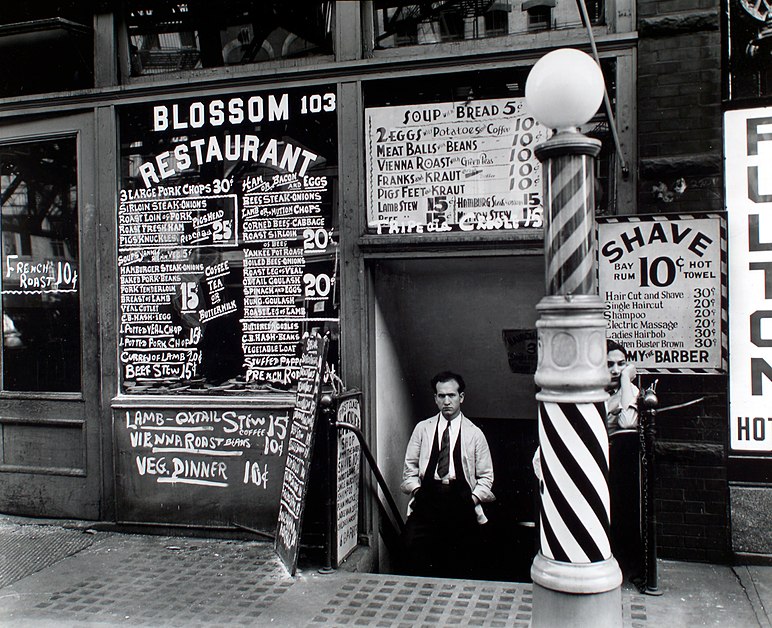For my project I chose to do Bernice Abbott, an American Architectural Photographer. She is best known for her black-and-white photo's of New York City urban life and architecture in the 1930s. Abbott was born in 1898 in Springfield, Ohio. She stayed in Ohio until 1918 when she moved to Greenwich Village in Manhattan, New York City. She traveled to Europe in 1921, and spent two years studying sculpture in Paris and Berlin. Her interest in photography began in 1923. She studied photography for a short time in Berlin and then returned to Paris in 1927. She became well known for her modern portraiture in Paris. In 1929 she moved back to New York, and began a project titled Changing New York. She photographed many now-destroyed building and neighborhoods of Manhattan. She supported herself until 1935 when she was hired by the Federal Art Project to help her with her Changing New York project.
In her photo's of New York she sought to bring together three aspects of urban life: the diverse people, the places they work and play, and their day-to-day activities. She wanted to show people that their environment was a product of their actions and behavior. Her pictures intended to either stabilize or destabilize a subject, depending on how she felt about it. She also practiced straight photography, where there is no manipulation in both the subject matter and the processing.
Photo Analyse:
In this photo, New York's "Radio Row" on Cortlandt Street, Berenice Abbott mixes the elements of urban life and architecture. The photo shows civilians leading their day to day life in the middle of a very urban environment. Therefore, the photo has a very urban feel to it. The presence of the buildings and skyscrapers capture the idea of the the life and flow of a major city. The photo also suggests that the civilians are both influencing and being influenced by their environment, because the focus is on both the people and the environment around them.
More Photos by Berenice Abbott:
My Photos:
Lukkertid- 1/800 seconds
Blenderåpningen-F/3,5
ISO-1800
Lukkertid- 1/800 seconds
Blenderåpningen-F/3,5
ISO-1600
Lukkertid- 1/800 seconds
Blenderåpningen-F/3,5
ISO-3200
Blenderåpningen-F/16
ISO-640
Lukkertid- 1/320 seconds
Blenderåpningen-F/5
ISO-200
Lukkertid- 1/400 seconds
Blenderåpningen-F/10
ISO-200



.jpg)







No comments:
Post a Comment